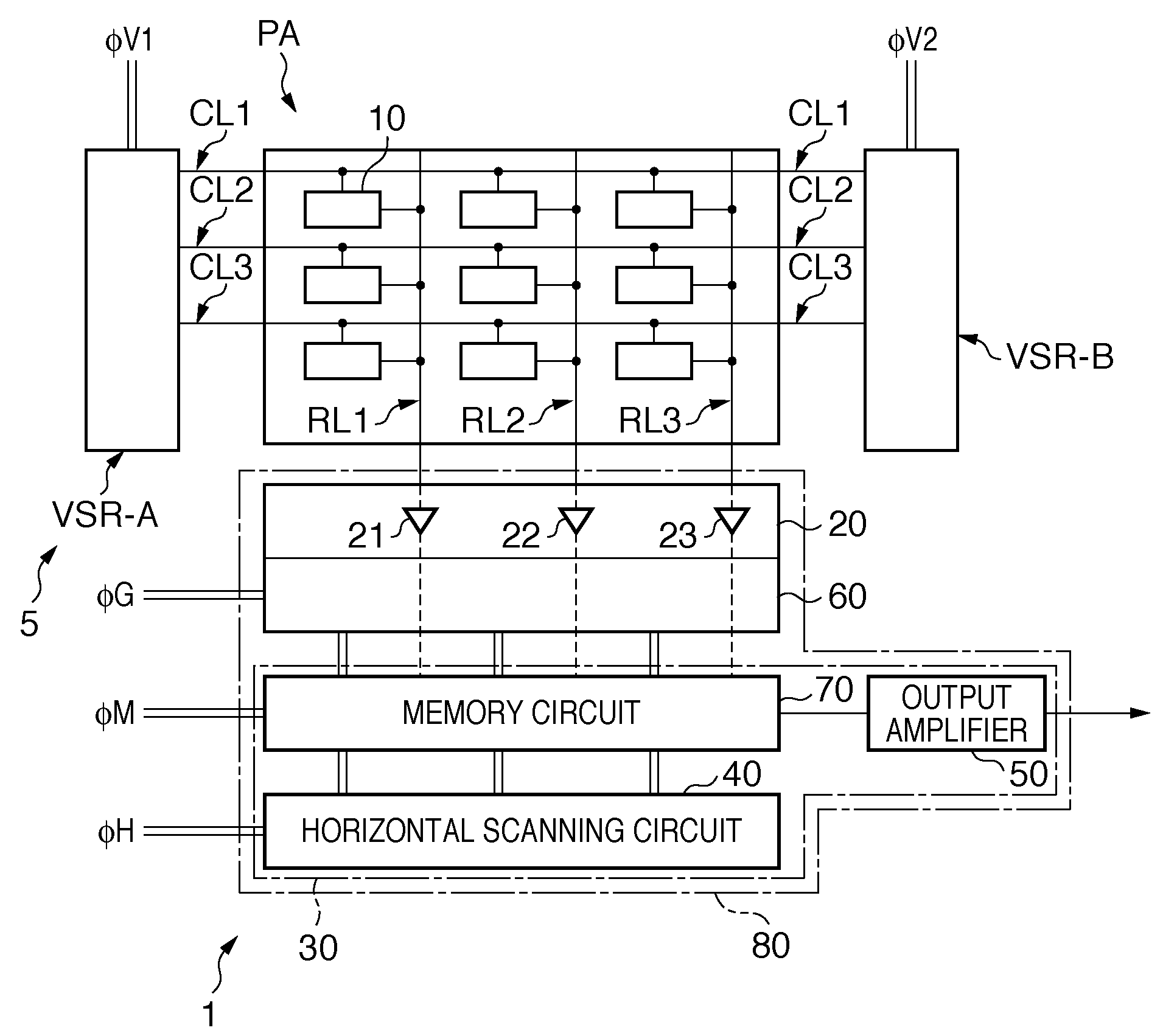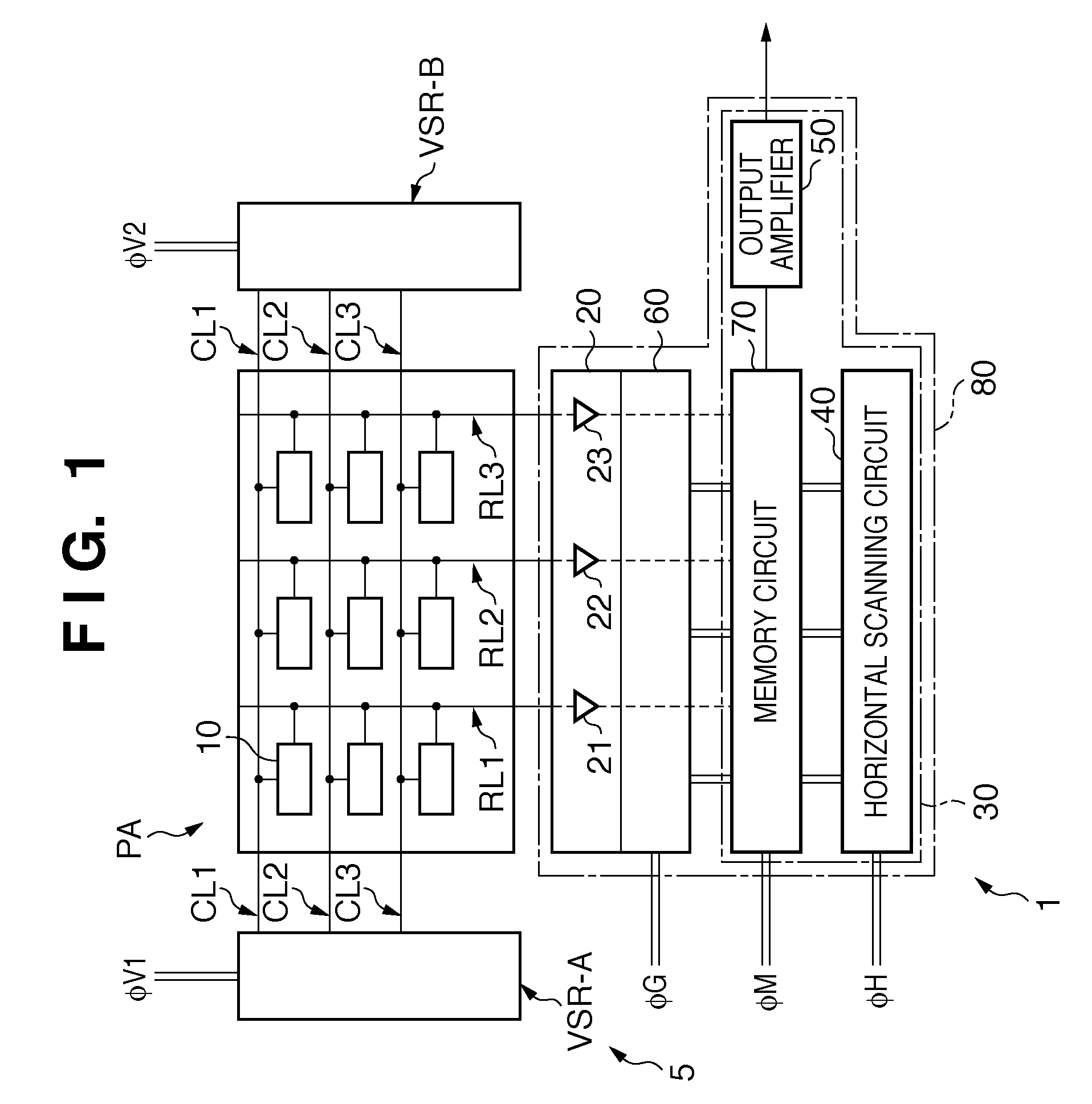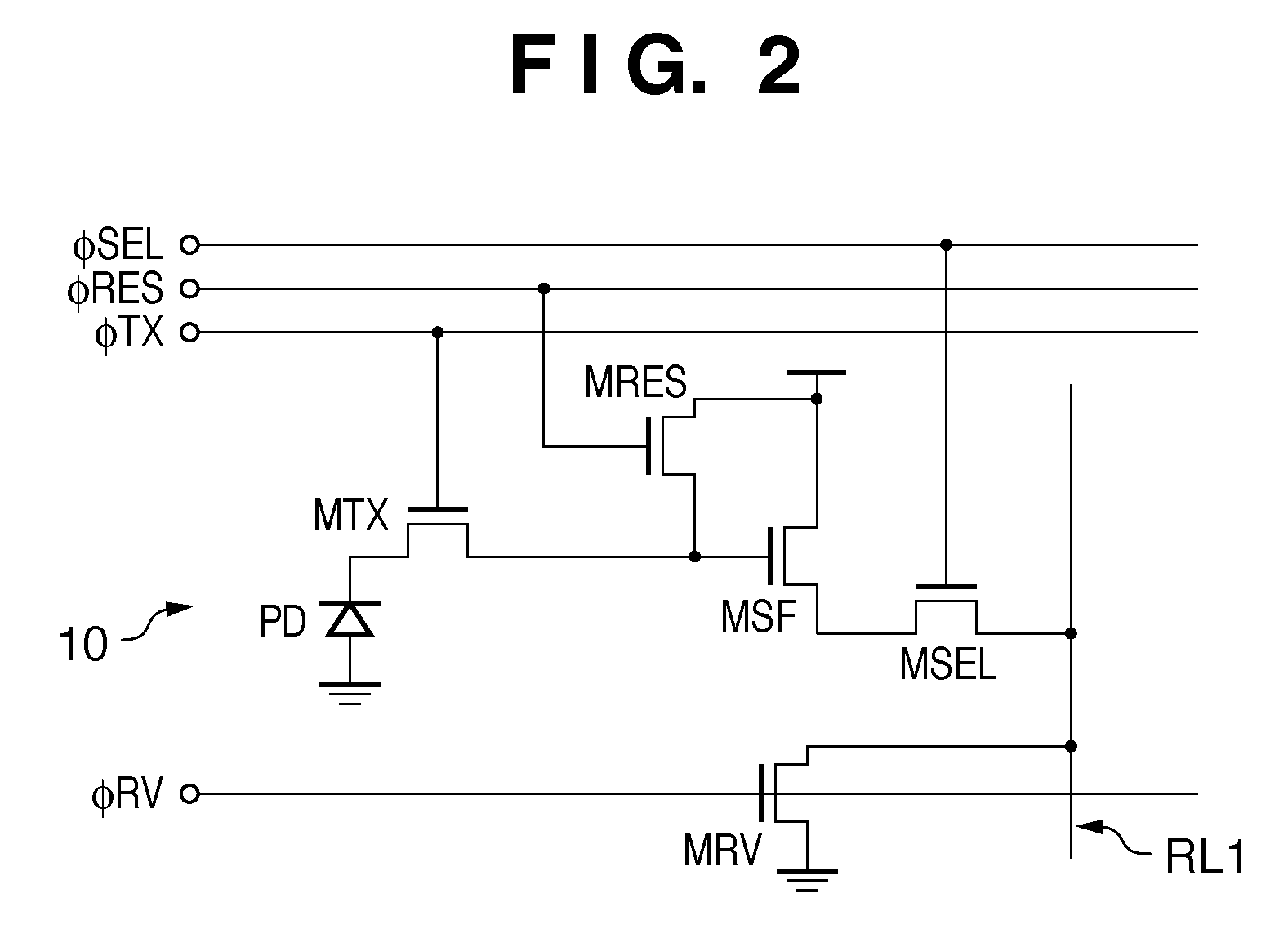Image sensing apparatus and image capturing system
a technology of image sensing and image capturing, which is applied in the direction of color television details, television system details, television systems, etc., can solve the problems of long time required for reading out signals from all pixels of the pixel array, the signal read out from the pixel array may reach the upper limit of the dynamic range and become saturated, and the frame period for obtaining the signals of the whole image may be very long, so as to increase the frame rate of reading
- Summary
- Abstract
- Description
- Claims
- Application Information
AI Technical Summary
Benefits of technology
Problems solved by technology
Method used
Image
Examples
Embodiment Construction
[0038]The schematic arrangement and the operation of an image sensing apparatus 1 according to the first embodiment of the present invention will be described with reference to FIG. 1. FIG. 1 is a block diagram showing the arrangement of the image sensing apparatus 1 according to the first embodiment of the present invention. In FIG. 1, each of control signals φV1, φV2, φG, φM, and φH is shown as one pulse, though they may include a plurality of pulses.
[0039]The image sensing apparatus 1 includes a pixel array PA, selection unit 5, and readout unit 80. The image sensing apparatus 1 has a thinning-out readout mode for reading out signals from some pixels of the pixel array PA.
[0040]In the pixel array PA, a plurality of pixels 10 are arrayed in the row and column directions. FIG. 1 shows a pixel array having 3 rows×3 columns. For the descriptive convenience, a pixel array having 3 rows×3 columns is illustrated here. In fact, the pixel array often includes a larger number of pixels, as...
PUM
 Login to View More
Login to View More Abstract
Description
Claims
Application Information
 Login to View More
Login to View More - R&D
- Intellectual Property
- Life Sciences
- Materials
- Tech Scout
- Unparalleled Data Quality
- Higher Quality Content
- 60% Fewer Hallucinations
Browse by: Latest US Patents, China's latest patents, Technical Efficacy Thesaurus, Application Domain, Technology Topic, Popular Technical Reports.
© 2025 PatSnap. All rights reserved.Legal|Privacy policy|Modern Slavery Act Transparency Statement|Sitemap|About US| Contact US: help@patsnap.com



